Abstract
Laboratory studies of consumer demand theory require assumptions regarding the definition of price in the absence of a medium of exchange (money). In this study we test the proposition that the fundamental dimension of price is a cost-benefit ratio expressed as the effort expended per unit of food value consumed. Using rats as subjects, we tested the generality of this "unit price" concept by varying four dimensions of price: fixed-ratio schedule, number of food pellets per fixed-ratio completion, probability of reinforcement, and response lever weight or effort. Two levels of the last three factors were combined in a 2 x 2 x 2 design giving eight groups. Each group was studied under a series of six FR schedules. Using the nominal values of all factors to determine unit price, we found that grams of food consumed plotted as a function of unit price followed a single demand curve. Similarly, total work output (responses x effort) conformed to a single function when plotted in terms of unit price. These observations provided a template for interpreting the effects of biological factors, such as brain lesions or drugs, that might alter the cost-benefit ratio.
Full text
PDF
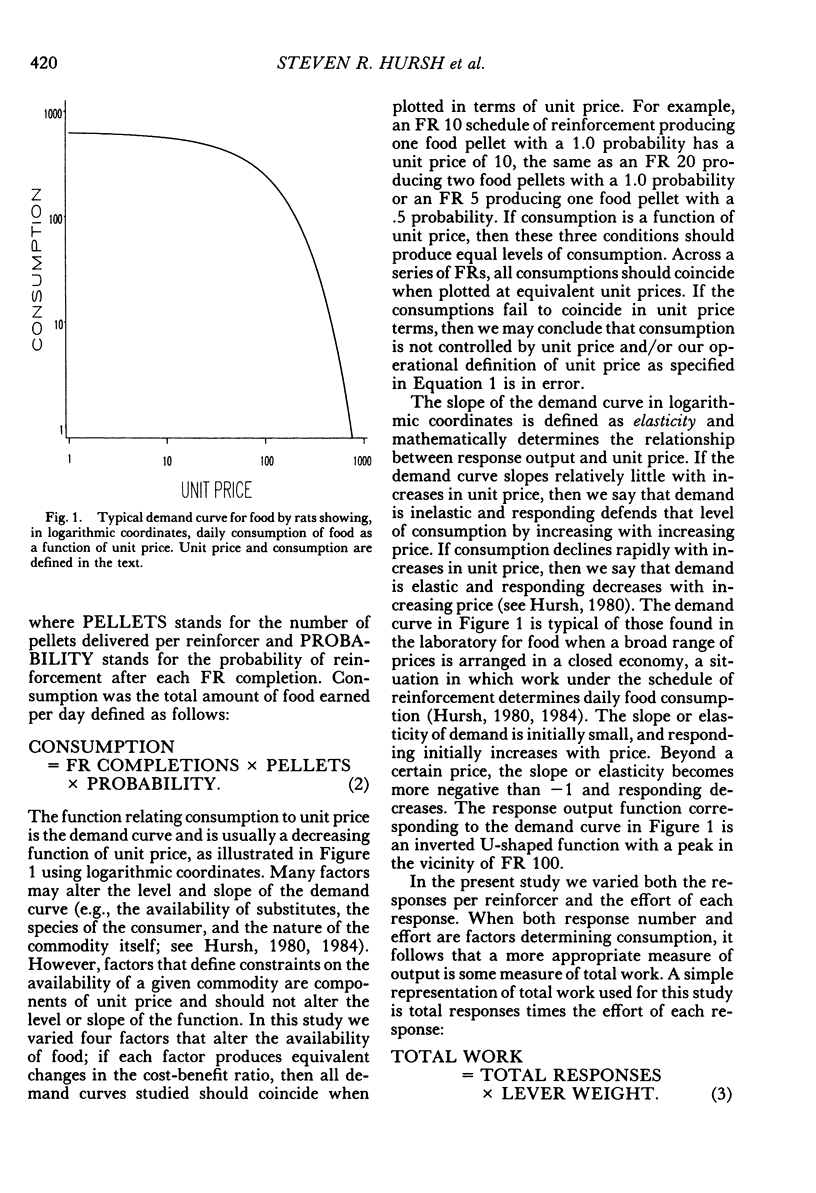

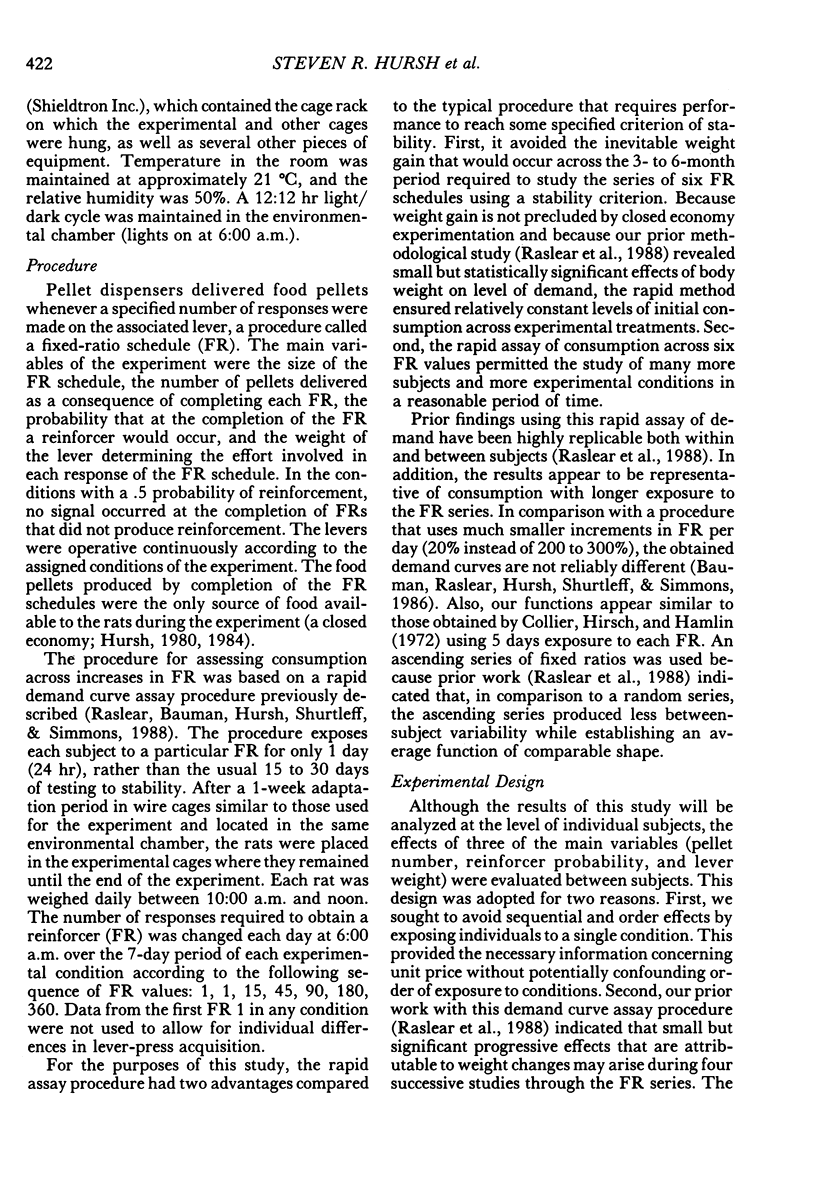





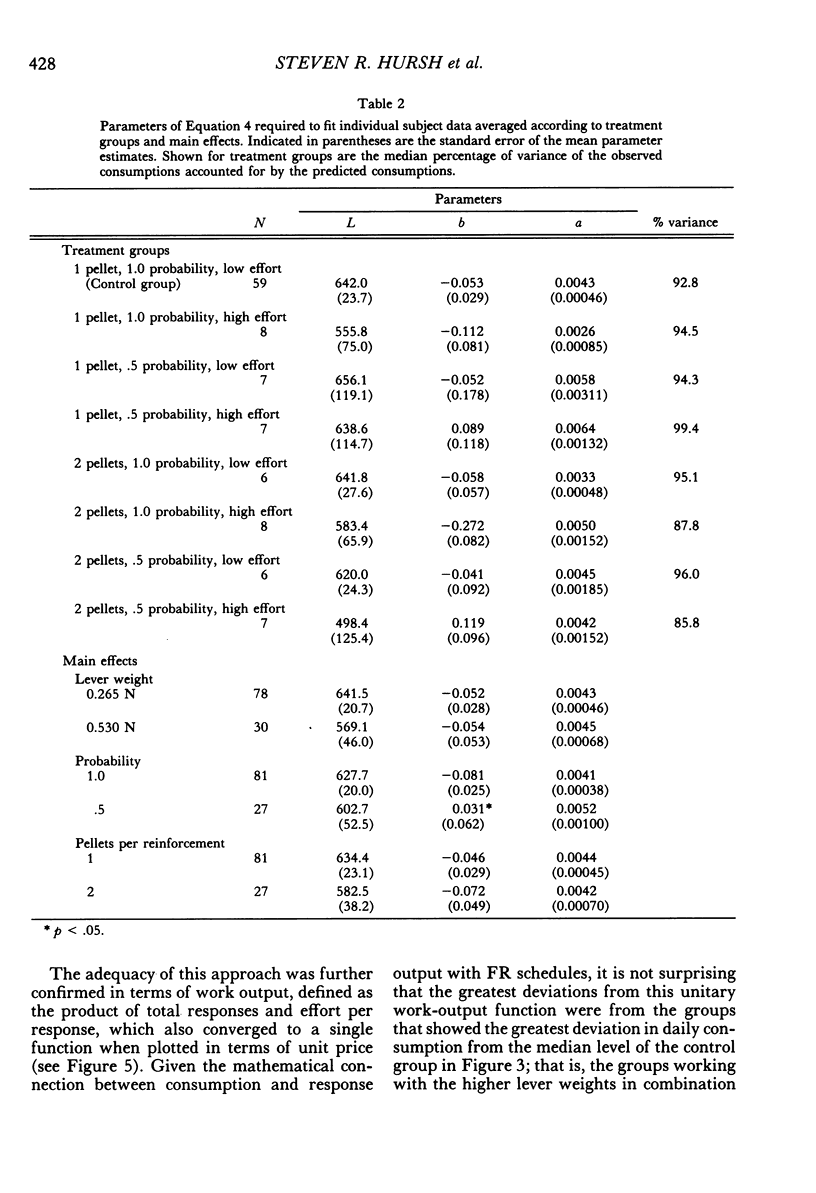




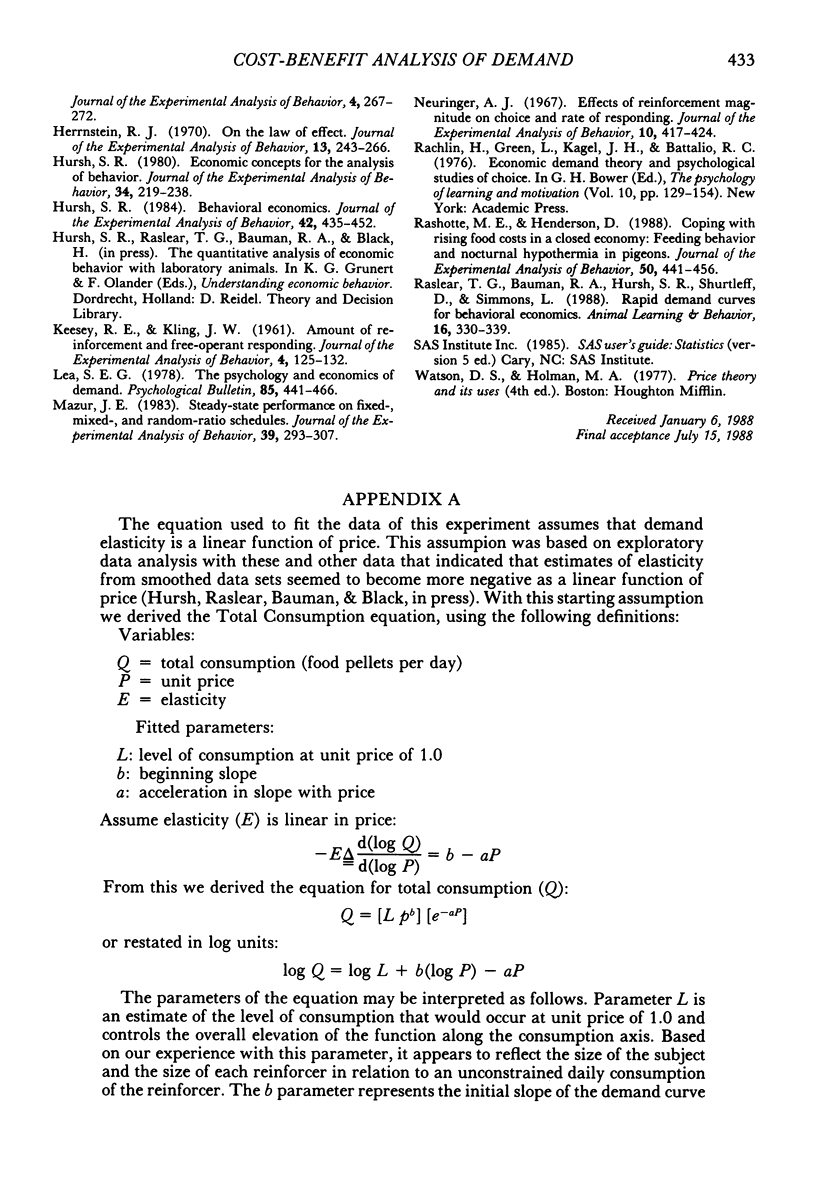
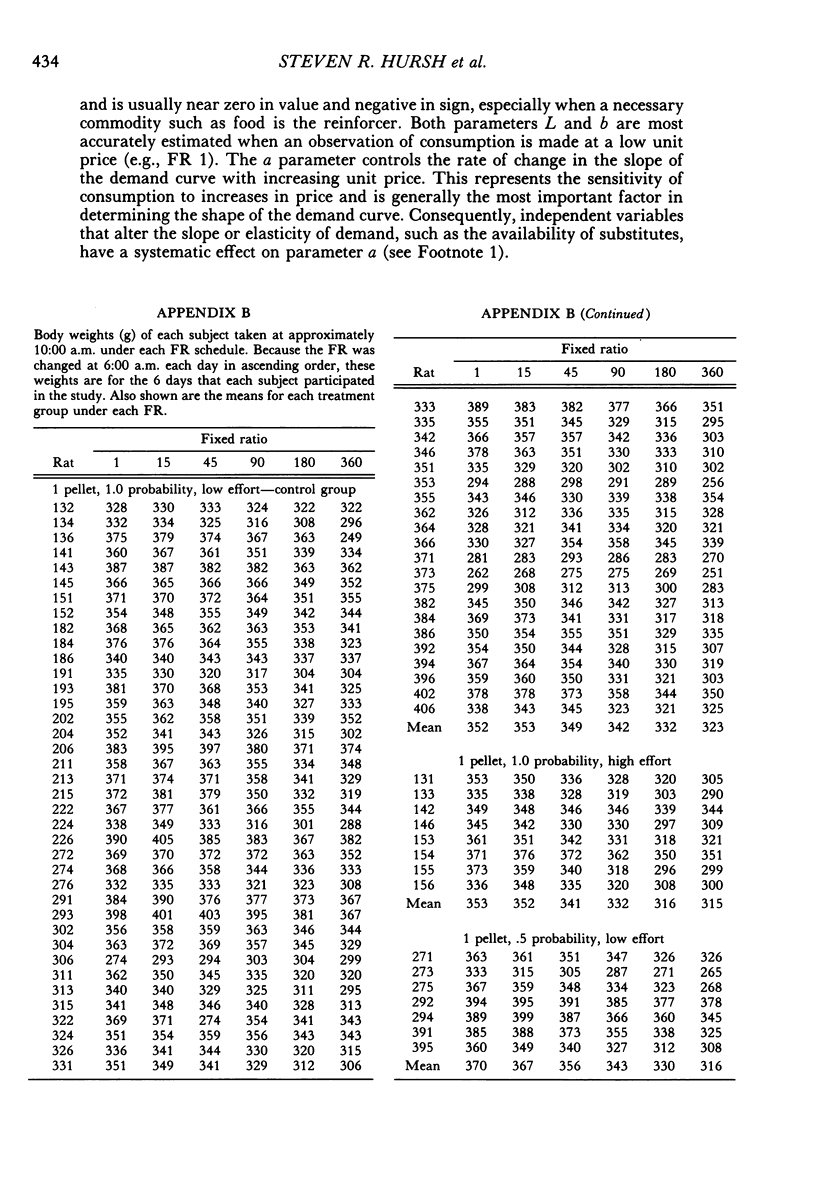






Selected References
These references are in PubMed. This may not be the complete list of references from this article.
- Collier G. H., Johnson D. F., Hill W. L., Kaufman L. W. The economics of the law of effect. J Exp Anal Behav. 1986 Sep;46(2):113–136. doi: 10.1901/jeab.1986.46-113. [DOI] [PMC free article] [PubMed] [Google Scholar]
- Collier G., Hirsch E., Hamlin P. H. The ecological determinants of reinforcement in the rat. Physiol Behav. 1972 Nov-Dec;9(5):705–716. doi: 10.1016/0031-9384(72)90038-8. [DOI] [PubMed] [Google Scholar]
- Felton M., Lyon D. O. The post-reinforcement pause. J Exp Anal Behav. 1966 Mar;9(2):131–134. doi: 10.1901/jeab.1966.9-131. [DOI] [PMC free article] [PubMed] [Google Scholar]
- HAMILTON C. L., BROBECK J. R. HYPOTHALAMIC HYPERPHAGIA IN THE MONKEY. J Comp Physiol Psychol. 1964 Apr;57:271–278. doi: 10.1037/h0039915. [DOI] [PubMed] [Google Scholar]
- Herrnstein R. J. On the law of effect. J Exp Anal Behav. 1970 Mar;13(2):243–266. doi: 10.1901/jeab.1970.13-243. [DOI] [PMC free article] [PubMed] [Google Scholar]
- Hursh S. R. Behavioral economics. J Exp Anal Behav. 1984 Nov;42(3):435–452. doi: 10.1901/jeab.1984.42-435. [DOI] [PMC free article] [PubMed] [Google Scholar]
- Hursh S. R. Economic concepts for the analysis of behavior. J Exp Anal Behav. 1980 Sep;34(2):219–238. doi: 10.1901/jeab.1980.34-219. [DOI] [PMC free article] [PubMed] [Google Scholar]
- KEESEY R. E., KLING J. W. Amount of reinforcement and free-operant responding. J Exp Anal Behav. 1961 Apr;4:125–132. doi: 10.1901/jeab.1961.4-125. [DOI] [PMC free article] [PubMed] [Google Scholar]
- Mazur J. E. Steady-state performance on fixed-, mixed-, and random-ratio schedules. J Exp Anal Behav. 1983 Mar;39(2):293–307. doi: 10.1901/jeab.1983.39-293. [DOI] [PMC free article] [PubMed] [Google Scholar]
- Neuringer A. J. Effects of reinforcement magnitude on choice and rate of responding. J Exp Anal Behav. 1967 Sep;10(5):417–424. doi: 10.1901/jeab.1967.10-417. [DOI] [PMC free article] [PubMed] [Google Scholar]
- Rashotte M. E., Henderson D. Coping with rising food costs in a closed economy: feeding behavior and nocturnal hypothermia in pigeons. J Exp Anal Behav. 1988 Nov;50(3):441–456. doi: 10.1901/jeab.1988.50-441. [DOI] [PMC free article] [PubMed] [Google Scholar]


